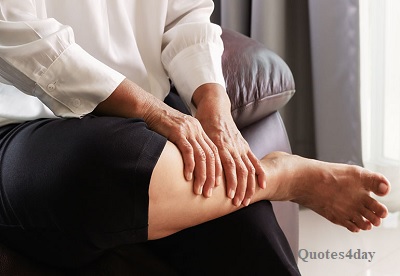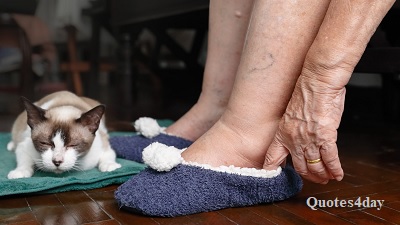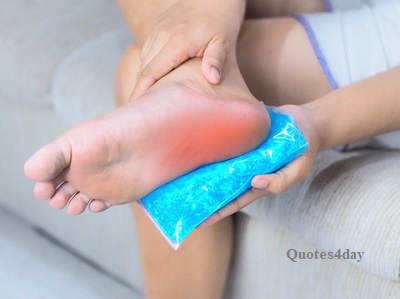[ad_1]
Probably, there is no person who would not encounter edema in his life.
When they talk about Body Swelling, they mean an increase in some areas of the body and the accumulation of fluid in it. What’s happening: Small blood vessels leak fluid into the surrounding tissues, it accumulates, and the tissues increase in size.

This is the reaction of the body to many influences, for example, an insect bite, or a bruise. This is how external local edema occurs, which is relatively easy to associate with the cause of their occurrence and eliminate.
If you know that the bites of certain insects cause allergies, it is better to stock up on antihistamines before traveling somewhere. Even if it is not known what kind of insects are found at the place of arrival, it is better to take medicines with you.
How to know if you are swollen
It may seem strange, but it is not always possible to understand that you are swollen. When in doubt, pay attention to whether marks remain on the skin when you press it. If the fossa persists for a fraction of a second, it is likely that swelling is occurring.
See if there are marks from shoes and clothes on the skin. And also on the difference in the size of the joints of the arms and legs in the morning and in the evening: do they increase by the end of the day?
Where does internal edema come from?
Internal swelling can occur as a reaction to a drug, an allergen, inflammation, or a serious injury. They may appear quickly or slowly, with or without other symptoms.
If you experience chest pain, difficulty breathing, or dizziness, call an ambulance. However, sometimes a person does not notice at all that he is swelling, because it happens gradually and without symptoms. The skin can start to hurt, peel off, and itch, and only after that, the person pays attention to the fact that this place, in general, has increased in size.
Edema often accompanies pregnancy and old age, and also appears before critical days. You may notice that when you press the skin on the body, pits remain, and you no longer feel comfortable in the same shoes.
Problems with the kidneys, lymphatic or cardiovascular system, and oncological diseases can cause swelling of both the whole body and individual parts.
How to Deal with Body Swelling
If you have not found serious causes of your edema, you can try to adjust your lifestyle. Taking diuretics on your own or drinking a lot more water to get rid of swelling can be ineffective and even dangerous.

Of course: if you have allergic edema, try not to come into contact with the allergen or its “relatives”. For example, if you are allergic to one kind of nut, be careful with other nuts, as well as aggressive allergens, such as honey and exotic fruits for you.
Excessive consumption of certain foods, such as sugar, cocoa, or citrus fruits, can increase the symptoms of an allergy to other foods.
Salt
Instead, try reducing the amount of salt you eat. It can increase the amount of fluid accumulated by the cells and lead to swelling.
The recommended amount of salt is less than 1 teaspoon (2 mg). If this does not help get rid of swelling, use even less salt: most likely, you consume more from prepared foods.
A good decision is not to buy ready-made food: sausages, sausages, bacon, ready-made soups, ketchup, and sauces. Since it is impossible to get rid of salt in them, you run the risk of exceeding the permissible limits.
Breaks in motion or on motion
If your job involves constant sitting in one position or standing for a long time, your legs may begin to swell. Over time, this can lead to chronic fatigue and difficulty in movement.
Start doing regular stretches, such as getting up, stretching, and walking every hour you sit. If you can’t remember when it’s time to get up, set reminders on your smartphone. Over time, the movement will become a habit and reminders will not be required.
For those whose work involves constant movement or standing in one position (teachers, couriers), it is also better to take breaks to change position. It’s good if you can sit or lie down with your legs up. If this is not possible, warm up by squatting, stretching, rotating your joints, and wearing compression stockings.
If you are overweight, start losing it little by little. It is not necessary to subject the body to an aggressive load. It is enough to add 10-15 minutes of daily movement every week. And remove about 250 kcal from your daily diet (for example, a coffee latte and a couple of cookies).
If, on the contrary, you are very active, edema may appear from excessive physical exertion. Have you noticed that your joints are swollen? Take a short break from jogging, change the load, and do not forget to warm up and stretch.
Proper footwear and compression garments
It is important to remember that each type of activity has its own sports shoes: running or training sneakers differ in the degree of rigidity, and heel height. Not to mention that high heels are basically not meant to be walked all day (two hours maximum).
When choosing shoes, also consider pronation (foot inclination) and flat feet, if any. In some sports stores, you can take a short test, after which you will select shoes and insoles for your anatomy.
If you have varicose veins, exercise will do the trick – this is what will keep them from developing.
It will be interesting How to Establish a Sleep Pattern
You may feel very tired in the legs and swelling in the evenings. I recommend using compression stockings. Depending on which parts of the body are tired and swollen, you can buy compression socks, stockings, stockings, and sleeves. Or a full compression tracksuit or underwear.

If you often fly in an airplane, even for short distances, compression will save you from swollen tired legs after arrival. Wear comfortable underwear like a low-support sports tank top instead of a tight bra that can block lymph flow.
Conclusions
Edema is a condition in which capillaries leak fluid into the surrounding tissues, causing them to enlarge. There are many causes of edema, and if you are in doubt or notice problems with breathing, or pain in the heart, it is better to consult a doctor as soon as possible.
If swelling is not associated with any diseases, try to adjust your diet and lifestyle. Most often, edema is caused by the abuse of salt, a sedentary lifestyle, and a long stay in one position (standing work).
Take breaks, alternate body positions, and wear compression underwear. This will help you not only get rid of swelling but also feel more energetic.
[ad_2]
Source link